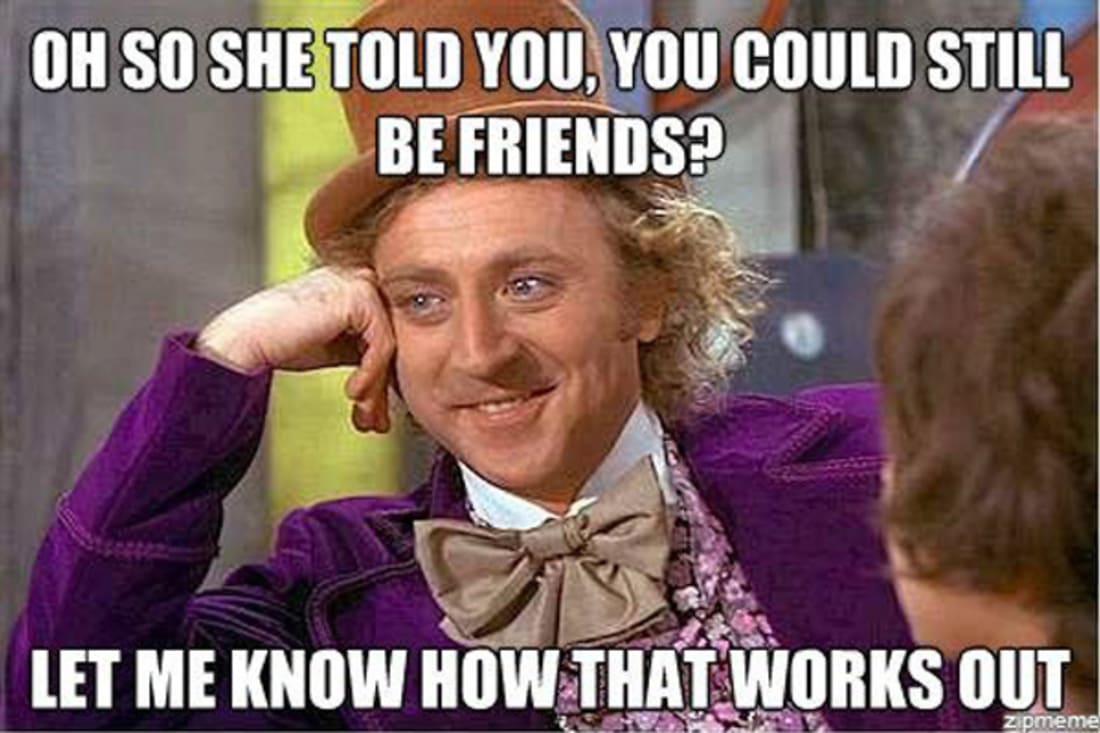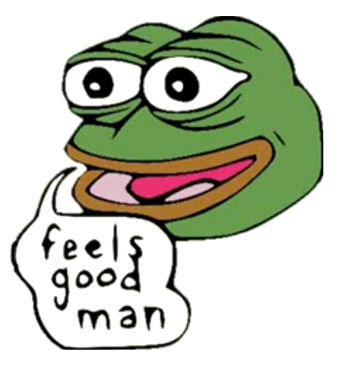Since the beginning of the internet social groups, back to the days of email message boards and BBSs a new, unique, form of communication, the Meme has been forged. The idea of memes as a communication tool which forms communities and cultures by having shared values and meanings well pre-dates the modern internet (1976). It’s best to use this more abstract definition of a communally shared ideal/value as we go forward.
Long gone are the days of harmless meme usage though, in an online tragedy of the commons this is how memes die.
Memes, in their purest form are be more than images overlaid with text. They are a form of inside jokes commonly, but can represent a new inside-definition-of-a-word, or a movement such as hashtags. These inside jokes or statements, can become a meme when enough criteria are met and in short order set off a nuclear reaction as it spreads. At this critical moment, an idea, concept or joke, breaks loose from it’s bindings holding it to one community, and spreads quickly through social media, this explosion of popularity is the birth of a viral-meme, one of modern days most powerful tools for expression.
In this spontaneous explosion of popularity, memes, especially extremely popular ones, and currently most commonly in the format of comics, can only be harnessed for a very brief time. As time passes, and new communities are exposed to the meme, they use it in unique ways, creating new definitions as to what the meme means until eventually the meme no longer most commonly represents what it’s initial meaning was.


Each meme’s original meaning only has a finite reach. Like a game of telephone, each time a meme is re-used, the re-memer adds their own interpretation of the meme or their own intentions. The original meaning, over time, will fade and become hard to make out, the final fizzle coming once the meme is so far from it’s initial edgy and controversial intended meaning that there is no purpose in redistributing the message. These mis-usages of memes are recorded, and in some way have become a meme in itself (/r/terriblefacebookmemes /r/mismemes).
This lifecycle of a meme shows it is not about the image with text overlayed, but that a meme is an idea shared between communities. Evolving and changing each time it’s shared/re-used. And, like clockwork when the idea a meme represents is no longer worthy of being shared, the meme dies.
Memes are a not an economy to be tapped and borrowed from, but a community which must be built up and nurtured to drive discussion. Without the control and nurture, a meme can become viral and grow to great heights, but can also quickly become the anti-thesis of what it was intended for.
Marketing departments that get this right are @Wendys, they have created a character of a soft-jabbing pig tailed red-head that makes a square burger. The message is enjoyed, and controlled, and just edgy enough to continue to thrive. The team behind this twitter-persona must walk the middle path, edgy and comedic enough to be shared and distributed, but maintain their control to disallow it to be abused and blowup out of control.
This can go horribly wrong when meme economies are misunderstood, if you can not harness the idea of the images used in the meme, then you do not control the message.
One Portlander is tattooed with today’s most controversial meme. At the time of permanent statement of their love of a meme, a stoner frog who just wants you to know taking a long wizz, “feels good man” … but almost overnight this frog meme evolved to now represents something abhorrent.
Pepe’s proliferation is probably the most notable of all the memes, it has been shared far and wide with an extreme of intentions an ideas (from a lazy/stoner frog, to representing a presidential candidate.) it means so many different things to so many different people. And shows, the power of the meme to spread ideas.
Let me take a step aside, and ask: In the world of lawful protections of intangible concepts and ideas, such as patents, trademarks, copyright, privacy, etc… where do memes lay?
The creator of the pepe meme, (name) is utilizing copyright. And gaining traction.
Wendy’s creation is being supported by a community, but I can only imagine controlled based on the business’s TradeMark.
Memes of non-public persons, would they have a right to their likeness based on their right to be left alone? This has been brought up in court numerous times, with the most relevant cases dating back to the early 1900s. Would they need to hope for supporting privacy laws (which are getting better in the EU, but generally are lacking elsewhere in the world especially in the US)
With no legal frameworks clearly showing how to protect memes (as concepts/shared ideas), should one be created? If you’re thinking a meme is just images with overlayed texts, sure there exists something to work off of. But, if memes represent the sharing of edgy and sometimes controversial ideas, should controversial ideas have a legal oversight?


